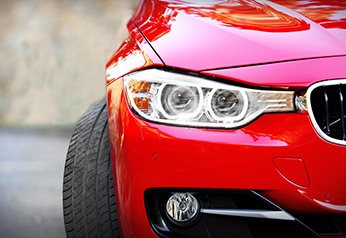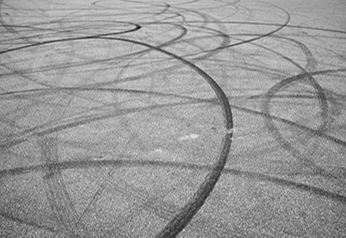
Tyre Pressure Guide
Tyre Pressure is the measure of how much air there is inside your tyres. It is counted in units psi or pound per square inch and should be at a certain optimum level for your tyre to work its best. The tyre pressure in your vehicle's tyres must always be at the right level. You can also check on your tyres at home using a handy, personal use, electronic tyre pressure gauge or simply by visiting the nearest petrol station where you can get it done for free.
Tyres need to be the right size, inflated, and heavily inspected if you intend to drive at high speeds since tyres undergo tremendous stress under these conditions. However, because of our hectic and busy lifestyles, let's admit it - despite our best efforts to schedule inspections regularly, we sometimes forget to check and not pay any particular attention to our tyres.
Having the wrong tyre pressure in your tyres is highly dangerous, especially when out on the road. Not only do you risk your own life, but that of your passenger's and other motorists and pedestrians on the road.
Tyre Pressure is essential to your tyre's - and vehicle's - well being because it is the air that is carrying the bulk of your car's load - not just the tyre itself. Tyres need to be filled with a prescribed amount of air to propel as well as stop your vehicle.
Incorrect Tyre Pressure
When your tyres have the wrong tyre pressure measurement, it can comprise your car's stability, braking capabilities as well as lose fuel-efficiency.
Deflection
Tyre Deflection is a serious tyre condition wherein the tyre itself gets deformed and bulges out at its contact patch with the road. Deflection is also commonly referred to as sidewall flex. When in motion, due to the weight of the car that the tyres bear, the tyre sidewalls bulge, and their treads flatten as they roll in contact with the road. This results in a dimensional difference between the tyre's 'unloaded' radius - from the centre of the axle to the top of the tyre - and its 'loaded' range - from the centre of the axle to the road surface. This difference is called 'deflection'. Increasing speed causes the tyres to deflect quicker and increasing your car's load causes them to deflect farther.
When air pressure is high
When you have too much air in your tyres, causing the tyre pressure to shoot up, your tyres will suffer from weakened grip and traction. It will cause your car to slip, bounce, slide and glide all over the road while the brakes won't be as quick and responsive. Compromised grip and traction is a disaster waiting to happen, especially if you are travelling on a crowded highway at high speeds.
Too much pressure also prevents the tyre tread from naturally deflecting, leading to premature tyre failure.
When air pressure is too low
When the pressure is too low, on the other hand, more of the tyre's surface and tread ends up on the road since your tyre will effectively be running flat. The tyre will suffer from excessive deflection - more of the tyre flattens out, creating a more significant and somewhat off-shaped contact patch. The bigger the contact patch increases the friction between the rolling tyre and the open road, causing the tyre surface to heat up. Excessive heat will affect the tyre in the long run, leading to faster tread wear. Lowered tyre pressure frequently cause blowouts as well since it can significantly damage the inside surface of the tyre.
What causes wrong tyre pressure?
1. Situations like tyre flexing, distortion and vehicle impacts can diminish a tyre's air pressure.
2. If your tyres have too much pressure, it is a case of too much compressed air loaded into the tyre at the petrol or vehicle service station.
3. Low tyre pressure, on the other hand, can be due to various reasons. Small holes on the tread can leak air out, the valve might be broke and it just naturally happens over time. Tyres slowly but surely lose pressure every day through the process of 'permeation'.
4. Seasonal changes or altitude changes also create a rise or drop in tyre air pressure.
In general, tyres lose up to one or two kilopascals of air per month in cold weather and even more in warmer weather. For every 10 degrees of temperature change, the tyre air pressure needs to adjust by approximately seven kpa or kilopascals.
5. Overlooking the load capabilities of trucks and 4WDs is another factor that can cause wrong tyre pressure. Because they are so often and variably loaded, their proper inflation pressure needs to be determined by actual tyre loads which require weighing your vehicle.
Benefits of Correct Tyre Pressure
There are significant benefits to keeping the correct air pressure in your tyres: they last longer, save on fuel, your car's handling is enhanced, and accidents are prevented.
How often should you check your tyres air pressure?
You should check the pressure of your tyres twice a month.
We also recommended you get your tyre pressure checked before a long trip and when your tyres are cold and not directly after a long drive.
If you check the tyres right after a drive, the reading will be inaccurate.
Schedule Routine tyre air top-ups
It is probably wise to start thinking in terms of refilling your tyres with air just like you do your petrol tank with fuel. A good reminder and the recommended interval between top-ups is every second time you fill up at the tank.
Different pressure levels
Many vehicles usually have different optimum tyre pressure measurements for the front and back tyres, so remember to have this adjustment made or maintained.
Also, remember to have the pressure in your spare checked. The space-saver type spare requires a higher air pressure level, and it won't be of any help if the tyre pressure is low on the day you need it.
How much air does my tyre need?
The correct air pressure is in the vehicle owner's manual. Every car also has a placard or label built-in usually located on the driver's side door panel that lists the tyres correct and recommended inflation pressures. Sometimes this label or sticker is also displayed under the fuel cap, or in the glove box. The label will look similar to the image below.
The placard tells you the maximum vehicle load, the cold tyre pressures and the tyre size recommended by the vehicle manufacturer. Another valuable resource is the Tyre load rating guide, as well.
Maintaining one's correct tyre pressure is the responsibility of every driver.
It can truly spell the difference between life and death in critical driving situations.



